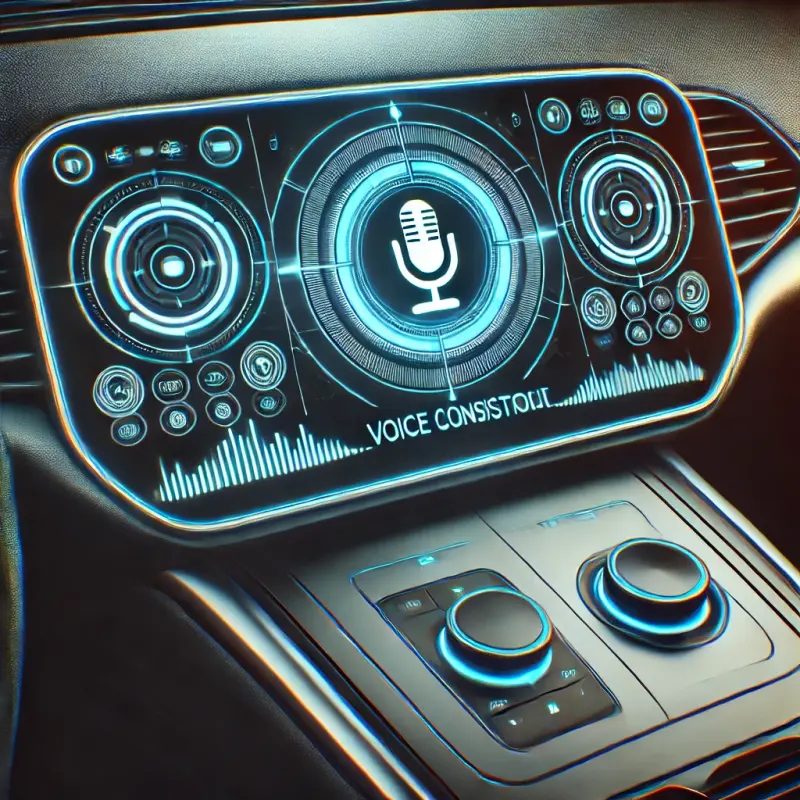How Voice-Controlled Car Technologies are Evolving

Introduction
The automotive industry is witnessing a significant transformation with the rapid advancement of voice-controlled technologies. Once considered a luxury feature, voice commands have now become integral to modern vehicles. From simplifying navigation to managing entertainment and enhancing safety, voice control has reshaped how drivers interact with their cars. This article explores how voice-activated systems have evolved and the latest breakthroughs driving this innovation.
The Rise of Voice Control in Cars
Voice control in automobiles initially began with simple commands, such as adjusting radio volume or activating GPS. As technology progressed, automakers recognized the potential for more sophisticated systems that could interpret complex speech patterns and commands. Voice control offers a hands-free solution, allowing drivers to focus on the road while managing car functions effortlessly.
Key Technologies Behind Voice Control
Modern voice-controlled systems rely on several key technologies:
-
Natural Language Processing (NLP): NLP enables cars to understand and respond to conversational language, making interactions feel more intuitive. Early systems required specific phrases, but NLP has allowed voice assistants to recognize a broader range of expressions.
-
Cloud Connectivity: Many of today's voice-activated systems are connected to the cloud, allowing for real-time updates and continuous learning. This connectivity ensures that the system stays up to date with new phrases, terms, and functionalities.
-
Artificial Intelligence (AI): AI plays a crucial role in enhancing the capabilities of voice assistants. Machine learning algorithms analyze user behavior and preferences, improving accuracy in understanding commands over time.
-
Microphone Arrays and Noise Cancellation: Clear voice recognition is essential for the smooth operation of these systems. Advanced microphone arrays and noise-canceling technology help filter out road noise and other distractions, ensuring that the assistant accurately picks up the driver's voice.
Recent Innovations in Voice Control Technology
In recent years, several exciting advancements have pushed the boundaries of voice control in cars:
-
Deep Integration with Vehicle Systems Modern systems go beyond basic commands, allowing drivers to control almost every aspect of the car. Voice assistants can now adjust climate settings, check tire pressure, activate seat heaters, and even schedule maintenance appointments. Tesla, for instance, offers voice control that can operate most of the car’s features without the need for physical input.
-
Advanced Personal Assistants Companies like Amazon and Google have made their voice assistants, such as Alexa and Google Assistant, available in cars. This integration provides drivers with the same functionalities they enjoy at home—checking their calendars, managing smart devices, and accessing real-time traffic updates—all through voice commands.
-
Multilingual Support The inclusion of multilingual support is another major leap. Modern systems can understand and respond to commands in several languages, making them more accessible to drivers across the globe. Companies like Mercedes-Benz are leading this front with multilingual and multicultural voice recognition features that adjust to regional accents and dialects.
-
Natural Conversation Mode Voice assistants are now capable of engaging in more natural, continuous conversations. Instead of requiring a wake-up command for every interaction, newer systems like those from BMW allow drivers to converse freely with the assistant, enhancing the overall user experience.
-
Enhanced Safety Features Voice control contributes significantly to road safety. Features like emergency voice commands, where drivers can call for help or report issues without taking their hands off the wheel, are becoming more common. Advanced driver assistance systems (ADAS) are now incorporating voice to alert drivers of hazards or suggest corrective actions.
The Future of Voice Control in Cars
Looking ahead, we can expect voice control to become even more intuitive and integrated into autonomous driving systems. As AI continues to evolve, these systems will likely adapt to individual driving styles and preferences, creating a personalized experience for each driver. In the near future, drivers might have their cars read emails aloud, dictate responses, or even book reservations without any manual interaction.
Voice control will also become a key player in the rise of electric and autonomous vehicles. As driving shifts away from manual operation, voice will play an even larger role in interacting with vehicle systems, making it a central feature in the next generation of transportation.
In conclusion, the evolution of voice-controlled technologies in cars has greatly enhanced the driving experience by making it safer, more convenient, and increasingly personalized. With rapid advancements in AI, NLP, and cloud connectivity, the future of voice-controlled automotive systems promises to be even more dynamic and transformative.
Artykuły
Zarejestruj się do naszych powiadomień, aby otrzymywać najświeższe i najbardziej interesujące artykuły bezpośrednio na swoją pocztę!